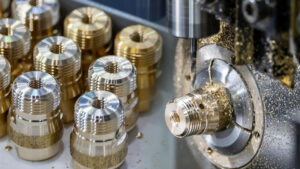We’ve established that poor quality can be detrimental to your bottom line and supply chain
visibility is key to managing quality control. Performing inspections during the production cycle
prevents poor quality products leaving the factory. Auditors should catch and address quality issues
before they damage a brand or retailer’s bottom line or reputation.
The Three Types of Quality Inspections
There are three primary types of quality inspections: pre-production, in-line, and final. There are a
variety of details that must be inspected and approved during each phase in order to detect and
correct quality problems.
Pre-production Inspection
During the pre-production phase, raw materials should be tested before entering production. This
may include a number of tests to examine the material for weight, dimensional stability, pilling
resistance, torqueing, pile retention, stretch recovery, and much more. Components including
closures, zippers, elastics and other embellishments such as beads, rhinestones, sequins and rivets
should also be tested for regulatory requirements.
During the pre-production phase, raw materials should be tested before entering production. This
may include a number of tests to examine the material for weight, dimensional stability, pilling
resistance, torqueing, pile retention, stretch recovery, and much more. Components including
closures, zippers, elastics and other embellishments such as beads, rhinestones, sequins and rivets
should also be tested for regulatory requirements.
In-line Inspection
Additional inspections should take place during various stages of production. For apparel,
inspections should occur at each critical step of the production process, from cutting to assembling
to pressing or other finishing procedures. For example, during the cutting phase, each cutting ticket
should be randomly inspected to ensure that each part is accurately notched and shades are
separated. If fabric is incorrectly cut, the parts cannot be properly assembled.
In-line inspections are important, as quality issues are often re-workable during the production
phase and can be fixed before the final product is complete. When quality issues are not corrected
during the production process, minor issues in the beginning of production can lead to larger issues
in later stages.
Final Inspection
The final inspection is the last opportunity for auditors to catch and address quality issues before
they end up in the hands of the buyer, or even worse, the consumer. During the final audit, products
are examined for specific performance requirements, overall appearance, sizing and fit
Brands and retailers often skip inspections while the products are still at the factory and only
perform random, final inspections once the order is received at the ultimate destination. By then, it
is too late and the only recourse is discarding the poor quality units. This is costly to every party,
especially the factory, which will bear the brunt of the expense.



